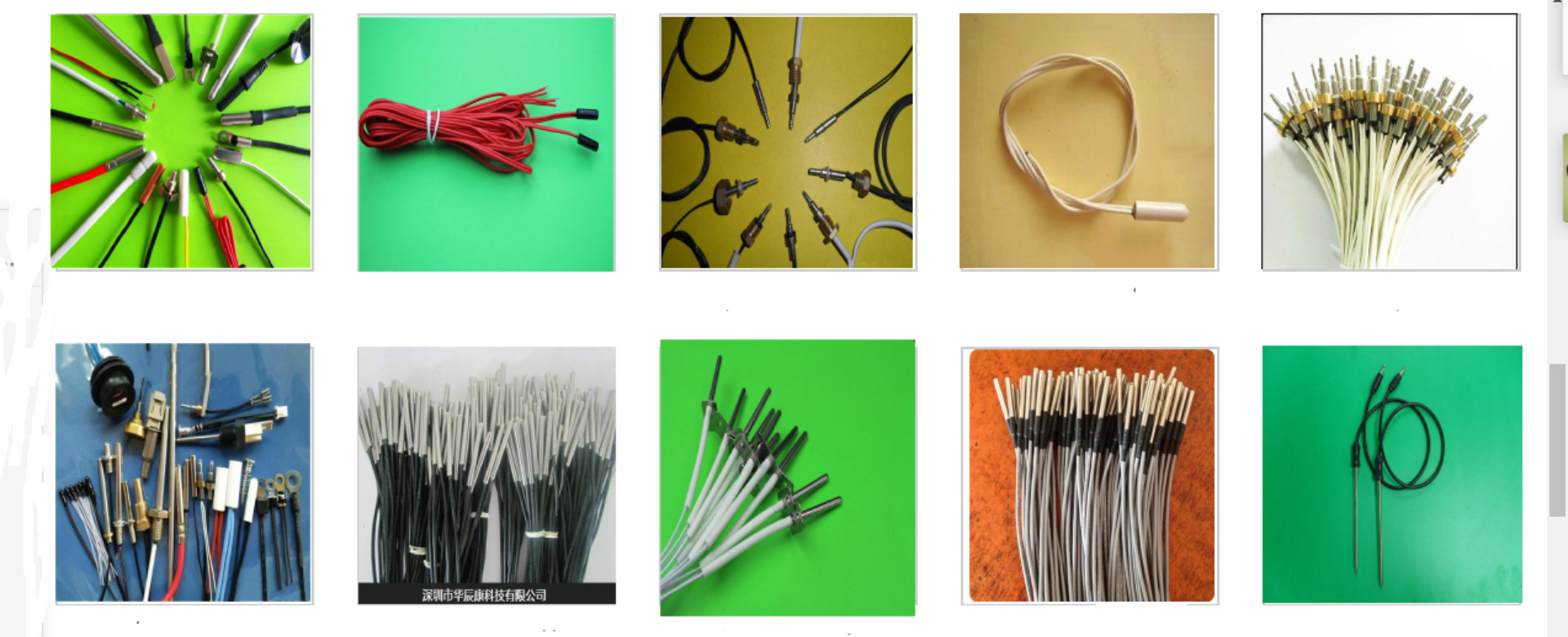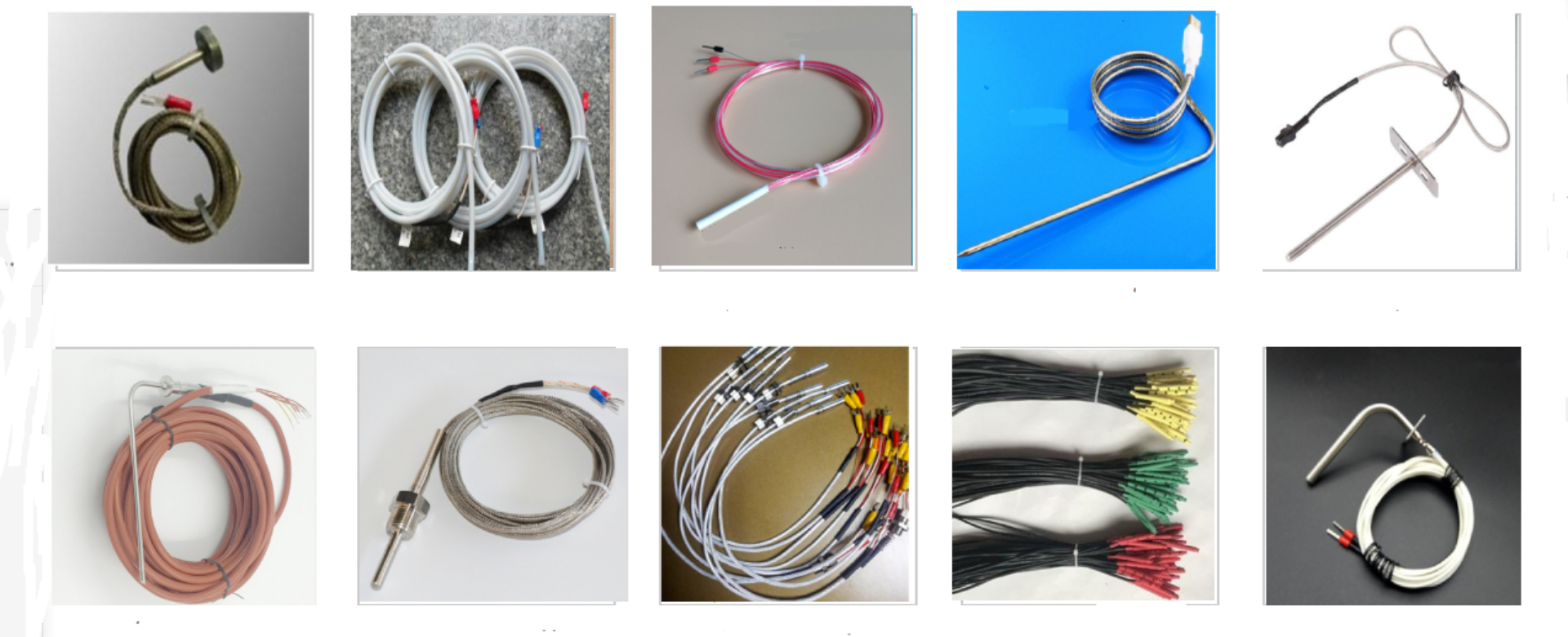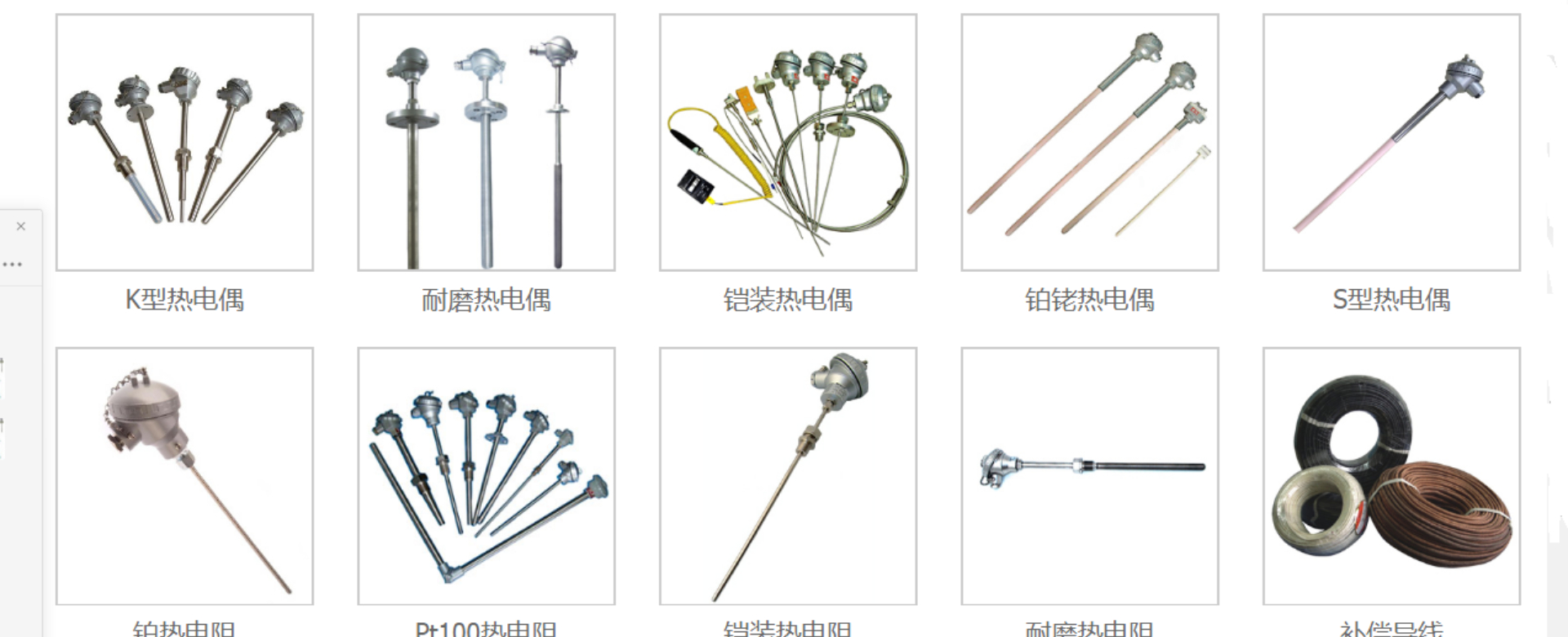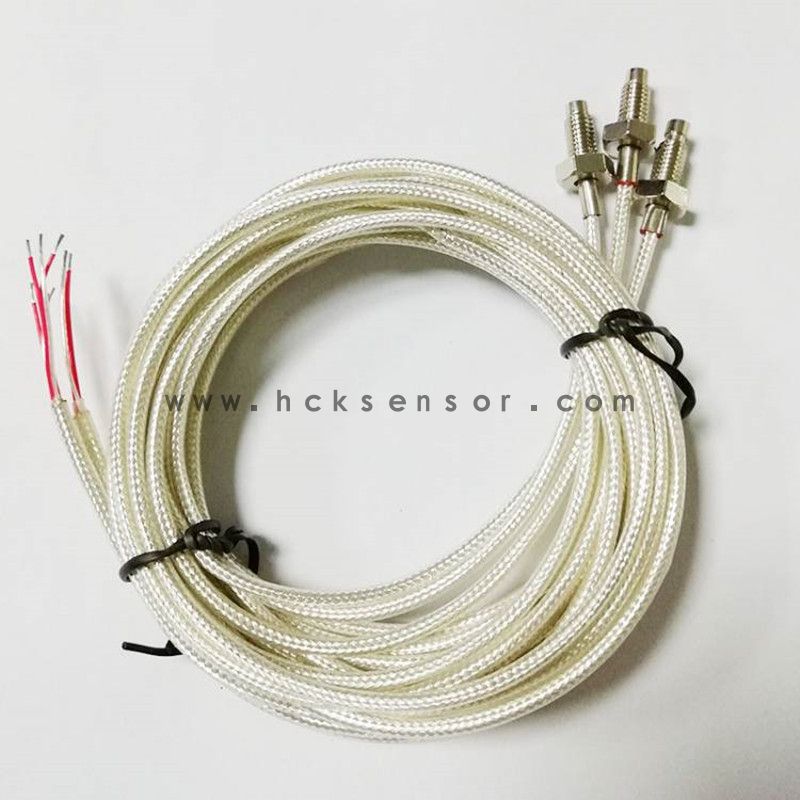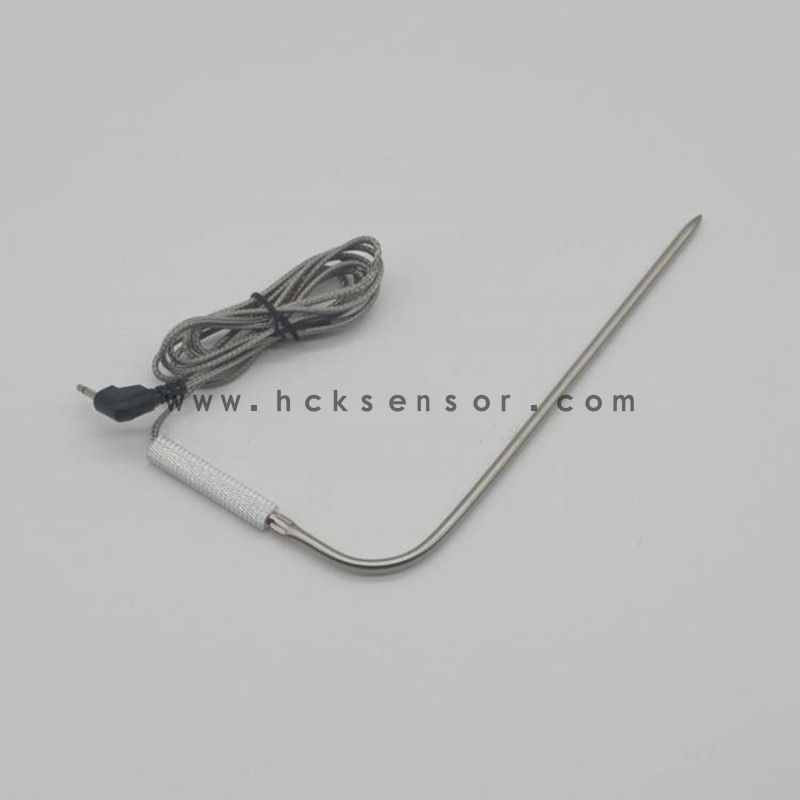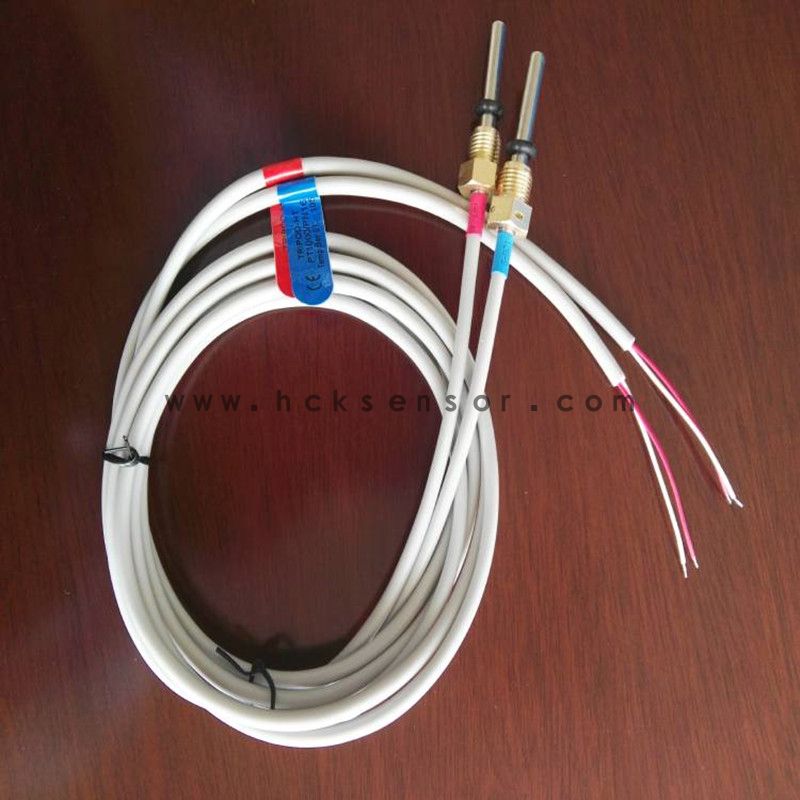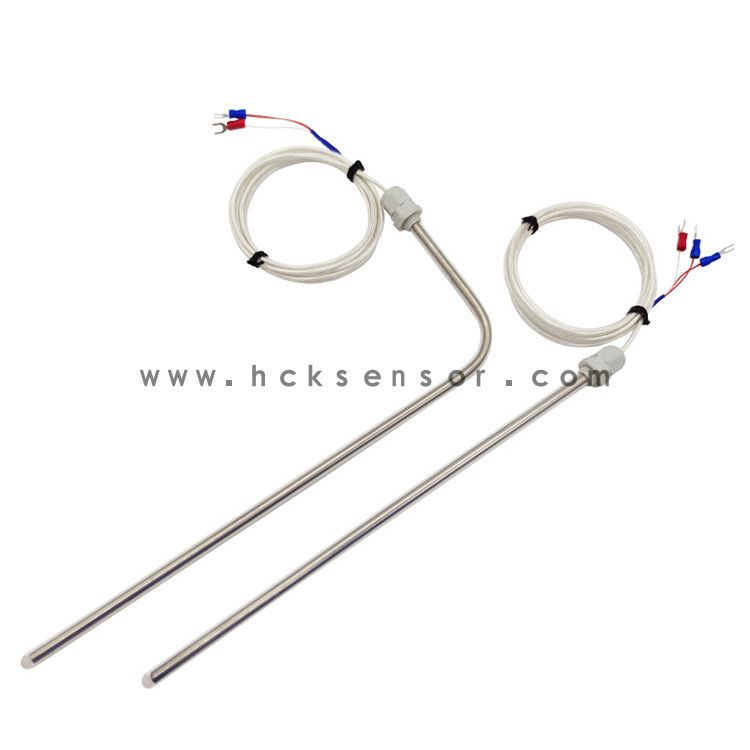Supply PT1000-A thermal resistance with silica gel PTFE plating shielding cable non-standard customization temperature sensor
Thermal resistance is used to measure the temperature of a substance when the temperature changes, its resistance also changes with the characteristics of the temperature.
When the resistance value changes, the working instrument displays the temperature value corresponding to the resistance value.

Thermal resistance sensors are made using the principle that the resistivity of a conductor or semiconductor changes with temperature.
Platinum is a precious metal, with high temperature resistance, good temperature characteristics, long service life and so on, so it is widely used. The relationship between the resistance value of platinum resistance and temperature is nonlinear, that is, Rt = R0 (I +αt +βt2)(t between 0 ~ 630℃)(1) formula: Rt - resistance value of platinum thermal resistance,Ω; Resistance value of R0-platinum thermal resistance at 0℃, R = 100Ω; α - first-order temperature coefficient,α = 3.908 × 10-3 (℃)β - second-order temperature coefficient,β = 5.802 × 10-7 (℃) In the actual temperature measurement circuit, the voltage of the platinum resistance is measured, so the corresponding voltage value and temperature function relationship need to be derived from the resistance value of the platinum thermal resistance, that is, Ut = f (Rt) = f[f (t)](2) to calculate (i.e. measure) the actual temperature.
If you need to custom PT1000A thermal resistance temperature sensor, pls give us the following parameters:
1. PT1000 platinum thermal resistance element precision selection (A ± 0.15B ± 0.3C ±0.6)
2. Temperature range? (-70℃-350℃)
3. How many lines of output? (Commonly used 2-wire / 3-wire / 4-wire system)
4. Requirements for wire rods? (High temperature/wear-resistant/anti-corrosion/explosion-proof/waterproof/other)
5. Length of the lead cable? (Commonly used 1M/2M/3M/4M/5M standard)
6. Exterior size? (Customizable)
7. Compensation cable tail treatment? (Tin/U-shaped terminals/metal pins/other terminals)


